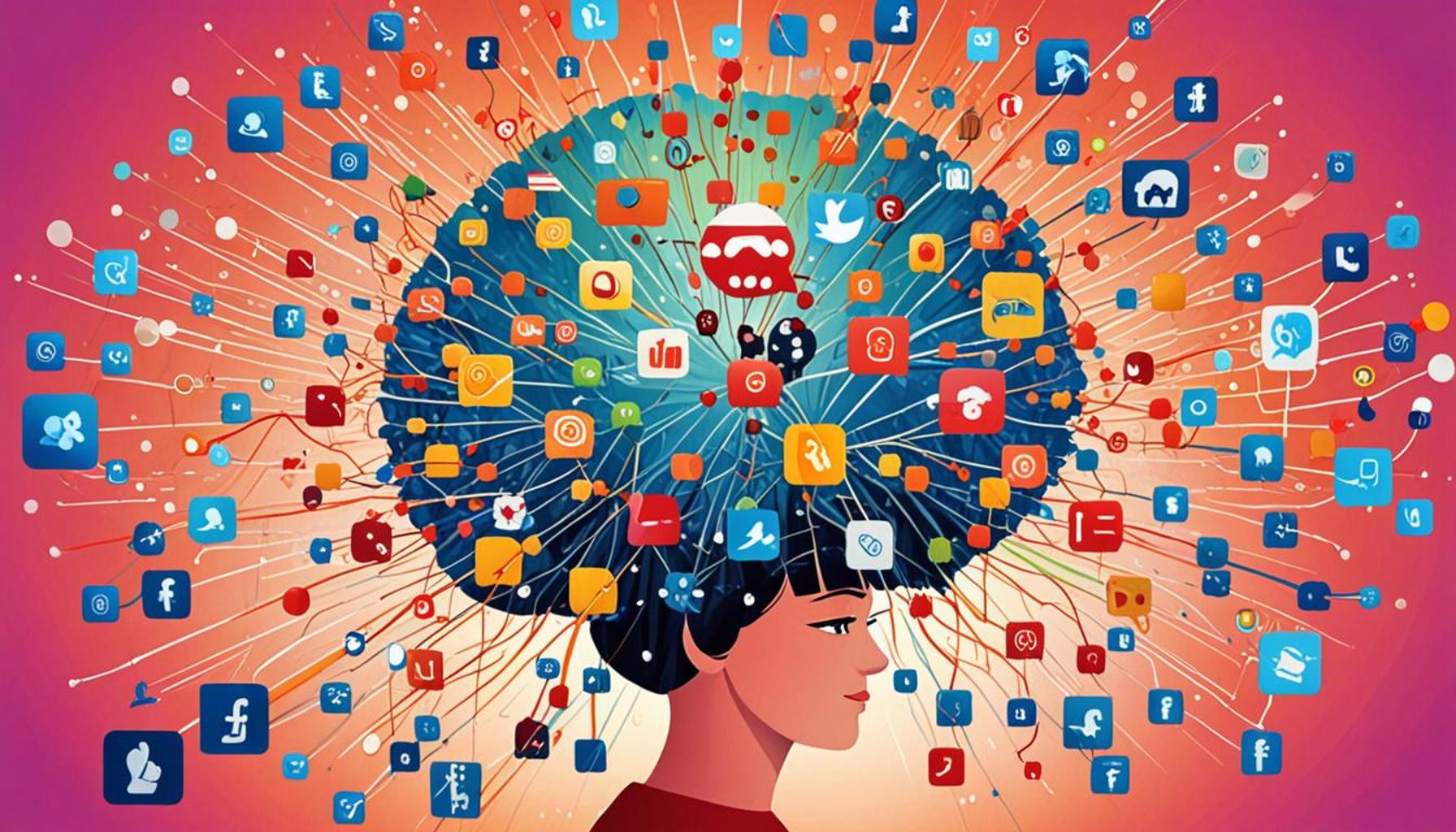The Role of Social Media in the Dissemination of Information about Government Benefits

Exploring Social Media’s Role in Government Communication
In the digital age, social media platforms have transformed how information is shared and consumed. From Facebook to Twitter, these channels play a crucial role in disseminating vital information about government benefits, which has become increasingly relevant to citizens seeking assistance.
Consider these essential points about social media’s influence:
- Real-time updates: Social media provides immediate access to changes in government policy or new aid programs. For instance, updates on relief funds during emergencies such as the COVID-19 pandemic were often shared first on these platforms, allowing those in need to respond swiftly.
- Wider reach: Information spreads rapidly, reaching diverse demographics that traditional media might overlook. This is especially important for marginalized communities who may not have access to mainstream news outlets, ensuring that vital updates on programs like temporary assistance for needy families (TANF) are universally available.
- Engagement: Users can engage directly with officials, asking questions and receiving timely responses. This interaction fosters accountability and transparency, exemplified by public forums hosted on social media where citizens can pose inquiries directly to lawmakers.
This interactive nature creates an environment where citizens can educate themselves on benefits such as unemployment insurance, food assistance, and healthcare subsidies. For example, platforms like Instagram and TikTok have become popular for influencers and organizations to share short, informative videos that condense complex eligibility regulations into easily digestible content.
Moreover, the visual impact of posts, videos, and infographics helps clarify complex details often associated with government programs. By breaking down intricate information, social media enhances public understanding. For instance, an infographic detailing how to apply for state health insurance can simplify the process and encourage those eligible to take action.
Given these factors, it’s vital to explore how social media not only facilitates communication but also shapes public perceptions regarding essential government services. With platforms serving as both a source of information and a place for community discussion, unraveling this dynamic could empower more individuals to take advantage of the benefits available to them. Understanding this landscape is crucial, as it not only impacts how individuals access services but also how they perceive the efficacy and reach of government programs.
In conclusion, as social media continues to evolve, citizens are afforded a unique opportunity to become better informed about their rights and benefits. The ongoing dialogue fostered by these platforms can lead to greater civic engagement, ultimately creating a more informed populace that is better equipped to navigate the complexities of government aid.
LEARN MORE: This related article may interest you
The Power of Instant Communication
One of the most significant advantages of social media is its ability to provide instant communication. Unlike traditional news outlets that rely on press releases and scheduled broadcasts, platforms such as Twitter and Facebook allow government agencies to share information directly with the public in real-time. For example, during critical events like natural disasters or economic crises, updates regarding available aid can be disseminated within moments, ensuring that citizens have the most current information.
According to a report by the Pew Research Center, nearly 72% of American adults use at least one social media platform. This extensive reach makes it possible for government entities to communicate with a vast audience, transcending geographical barriers. By leveraging social media, organizations can also provide localized updates that are necessary for community-specific resources. This aspect of social media ensures that essential information, such as disaster relief efforts or changes to unemployment benefits, can reach those who need it most without delay.
Educational Campaigns and Awareness
Social media plays a critical role in proactive education about government benefits. Various agencies run educational campaigns to inform citizens of their rights and entitlements. These campaigns often include engaging content tailored to younger audiences who may primarily use platforms like Instagram and TikTok. This approach has the potential to reshape how younger demographics perceive government assistance programs, making them more approachable and less stigmatized.
The multifaceted nature of social media allows for a rich array of content types that can educate users about complex programs, including:
- Live Q&A sessions: Many government officials conduct real-time Q&As on platforms like Facebook Live, allowing the public to ask pressing questions regarding eligibility and application processes.
- Infographics: Visual content simplifies intricate rules concerning benefits, such as how to apply for Medicaid or obtain food assistance. These graphics can be shared and reshared, broadening their impact.
- Video tutorials: Short, engaging videos can break down the steps needed to apply for benefits, making complex information more accessible for all audiences.
This innovative use of social media for education not only informs but also fosters a sense of community among users. Individuals frequently share their experiences applying for benefits, creating a supportive environment where people can learn from each other. Such peer-to-peer sharing can demystify the process and encourage those who may be hesitant to seek help due to a lack of understanding.
As we delve deeper into how social media impacts the dissemination of information regarding government benefits, it is essential to recognize the challenges as well. Although these digital platforms offer vast opportunities for education and engagement, the risk of misinformation remains ever-present. Addressing these challenges is vital for ensuring that citizens have access to accurate and beneficial information.
| Advantage | Description |
|---|---|
| Increased Reach | Social media platforms have billions of users, providing an unparalleled opportunity to disseminate information about government benefits to a wide audience quickly. |
| Real-Time Updates | Government agencies can share updates and changes regarding benefits in real time, ensuring people receive accurate and timely information that can affect their livelihoods. |
| Community Engagement | Social media facilitates two-way communication, allowing users to ask questions and engage with representatives about government services, fostering a sense of community. |
| Targeted Messaging | Social media’s advertising tools allow agencies to target specific demographics, ensuring that essential information reaches those who need to understand available benefits. |
The role of social media in the dissemination of information about government benefits cannot be understated. It serves as an essential tool to engage citizens and ensure they are informed about programs designed to assist them. With social media’s potential for viral sharing, important announcements, and resources can reach individuals who may not have access to traditional forms of communication.The accessibility of information on platforms like Facebook, Twitter, and Instagram not only ensures that citizens stay informed but also empowers them to advocate for their rights and the benefits they may be entitled to. As social media continues to evolve, its growing influence on the way government benefits are communicated will undoubtedly shape public understanding and accessibility in important ways.
LEARN MORE: This related article may interest you
Challenges in Information Accuracy and Reach
Despite the numerous advantages social media offers for disseminating information about government benefits, there are notable challenges that can undermine its effectiveness. The most concerning issue is the prevalence of misinformation. Studies show that false information can spread rapidly across platforms, often leading to confusion among citizens who may not have the tools or knowledge to discern fact from fiction.
The Pew Research Center indicates that over 64% of U.S. adults believe that fabricated news has a significant impact on their understanding of current events. This is especially troublesome in the realm of government benefits. For instance, misleading posts regarding eligibility for programs like the Supplemental Nutrition Assistance Program (SNAP) or the Child Tax Credit can result in people missing out on valuable assistance due to incorrect information circulating on social platforms.
The Impact of Algorithms and Targeting
Another challenge involves the algorithms used by social media platforms, which often favor engagement over accuracy. This can lead to the prioritization of sensationalized or misleading content, further perpetuating misinformation. Data from Facebook shows that posts with misleading headlines often receive more interactions than factual updates from official sources. When compounded by the fact that many individuals follow pages that reinforce their own beliefs, this creates echo chambers that limit access to reliable and necessary information about government programs.
Moreover, targeted advertising can obscure the visibility of critical information. While this technology enables messages to reach specific demographics, the downside is that essential updates on benefits may not reach vulnerable populations who truly need this information but do not fit the targeted profiles. A lack of inclusivity in the information-sharing process could further exacerbate inequalities in accessing government assistance.
User Engagement and Influence
Despite these challenges, the potential for user-generated content to validate and amplify accurate information cannot be overlooked. Social media users frequently share credible experiences and advice on navigating government aid programs. Influencers and community leaders are increasingly stepping into the role of educational ambassadors, particularly for marginalized groups who may feel alienated from traditional sources of information.
For example, local community organizations often use platforms like Instagram to share stories of those who have successfully accessed benefits, providing tangible proof of the system’s availability and effectiveness. This grassroots approach can be invaluable, as shared experiences foster trust and create a sense of belonging, encouraging others to seek help.
Looking to the future, it is essential for government agencies to enhance their digital literacy efforts. Training programs designed to empower citizens in identifying reliable information and understanding the significance of government benefits should be developed. By prioritizing these initiatives, agencies can bolster public confidence in the information shared on social media, equipping people with the tools needed to make informed decisions.
YOU MAY ALSO LIKE: Read read another article
Conclusion: Navigating the Social Media Landscape for Government Benefits
In conclusion, social media serves as a double-edged sword in the dissemination of information about government benefits. While it facilitates rapid communication and fosters community engagement, the challenges posed by misinformation, misleading algorithms, and targeted advertising cannot be overlooked. The Pew Research Center has highlighted the overwhelming impact of false information on public understanding, particularly concerning vital assistance programs like the Supplemental Nutrition Assistance Program (SNAP) and the Child Tax Credit. This underscores a critical need for rigorous efforts to enhance the accuracy and reach of important updates.
Furthermore, as social media platforms continue to evolve, so must strategies for ensuring that accurate information reaches vulnerable populations. This calls for greater collaboration between government agencies and community influencers who can bridge the gap between formal announcements and the lived experiences of individuals in need. By leveraging the authentic voices of users, especially from marginalized communities, the dissemination of government benefit information could see a transformative shift toward inclusivity and reliability.
Looking ahead, investing in digital literacy programs will be crucial in empowering citizens to navigate the complexities of social media. The successful integration of accurate government information into these platforms can foster trust and encourage participation in available programs, ultimately improving the quality of life for countless individuals. Engaging citizens in this way may very well be the key to unlocking the full potential of social media as a beacon of accurate information about government benefits, establishing a stronger, more informed society.


